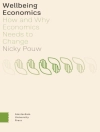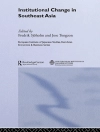Hierarchical Linear Modeling provides a brief, easy-to-read guide to implementing hierarchical linear modeling using three leading software platforms, followed by a set of original ‘how-to’ application articles following a standardized instructional format. The Guide portion consists of five chapters that provide an overview of HLM, discussion of methodological assumptions, and parallel worked model examples in SPSS, SAS, and HLM software. The Applications portion consists of ten contributions in which authors provide step-by-step presentations of how HLM is implemented and reported for introductory to intermediate applications.
‘The book covers the three most widely accessible statistical programs for multilevel modeling rather than just focusing on one. . . . An excellent tool for researchers who are beginning to learn multilevel modeling, as well as a great resource for experienced researchers who want to learn a different statistical program for multilevel models.’ —Debbie L. Hahs-Vaughn, University of Central Florida
‘The intelligent use of the examples helps explain both the conceptual framework of HLM and its basic individual applications.’—Luis L. Cabo, Mercyhurst College
Table of Content
Chapter 1. Fundamentals of Hierarchical Linear (Multilevel) Modeling – G. David Garson
Chapter 2. Preparing to Analyze Multilevel Data – G. David Garson
Chapter 3. Introductory Guide to HLM with HLM6 Software – G. David Garson
Chapter 4. Introductory Guide to HLM with SAS Software – G. David Garson
Chapter 5. Introductory Guide to HLM with SPSS Software – G. David Garson
Chapter 6. A Random Intercepts Model of GPA and SAT Scores Using SPSS – Forrest C. Lane, Kim F. Nimon & J. Kyle Roberts
Chapter 7. A Random Intercept Regression Model Using HLM: Cohort Analysis of a Mathematics Curriculum for Mathematically Promising Students – Carissa L. Shafto & Jill L. Adelson
Chapter 8. A Random Coefficients Model Using HLM: Studying the Achievement Gap in Schools – Gregory J. Palardy
Chapter 9. Emotional Reactivity to Daily Stressors Using a Random Coefficients Model with SAS Proc Mixed – Shevaun Neupert
Chapter 10. Hierarchical Linear Modeling of Growth Curve Trajectories Using HLM – David F. Greenberg & Julie A. Phillips
Chapter 11. A Piecewise Growth Model Using HLM to Examine Change in Teaching Practices Following a Science Teacher Professional Development Intervention – Jaime Lynn Maerten-Rivera
Chapter 12. Studying Reaction to Repeated Life Events with Discontinuous Change Models Using HLM – Maike Luhmann & Michael Eid
Chapter 13. A Cross-Classified Multilevel Model for First-Year College Natural Science Performance Using SAS – Brian F. Patterson
Chapter 14. Cross-Classified Multilevel Models Using STATA: How Important Are Schools and Neighborhoods for Children′s Educational Attainment? – George Leckie
Chapter 15. Predicting Future Events from Longitudinal Data with Multivariate Hierarchical Models Using SAS – Larry J. Brant & Shan L. Sheng
About the author
G. David Garson is a full professor of public administration at North Carolina State University, where he teaches courses on advanced research methodology, geographic information systems, information technology, e-government, and American government. In 1995 he was recipient of the Donald Campbell Award from the Policy Studies Organization, American Political Science Association, for outstanding contributions to policy research methodology and in 1997 of the Aaron Wildavsky Book Award from the same organization. In 1999 he won the Okidata Instructional Web Award from the Computers and Multimedia Section of the American Political Science Association, in 2002 received an NCSU Award for Innovative Excellence in Teaching and Learning with Technology, and in 2003 received an award ‘For Outstanding Teaching in Political Science’ from the American Political Science Association and the National Political Science Honor Society, Pi Sigma Alpha. In 2008 the NCSU Public Administration Program was named in the top 10 PA schools in the nation in information systems management. Prof. Garson is editor of and contributor to Handbook of Public Information Systems, Third Edition.(2010); Handbook of Research on Public Information Technology (2008), Patriotic Information Systems: Privacy, Access, and Security Issues of Bush Information Policy (2008), Modern Public Information Technology Systems (2007), and author of Public Information Technology and E-Governance: Managing the Virtual State (2006), editor of Public Information Systems: Policy and Management Issues (2003), coeditor of Digital Government: Principles and Practices (2003), coauthor of Crime Mapping (2003), author of Guide to Writing Quantitative Papers, Theses, and Dissertations (Dekker, 2001), editor of Social Dimensions of Information Technology (2000), Information Technology and Computer Applications in Public Administration: Issues and Trends (1999) and is author of Neural Network Analysis for Social Scientists (1998), Computer Technology and Social Issues (1995), Geographic Databases and Analytic Mapping (1992), and is author, coauthor, editor, or coeditor of 17 other books and author or coauthor of over 50 articles. He has also created award-winning American Government computer simulations, CD-ROMs, and six web sites for Prentice-Hall and Simon & Schuster (1995-1999). For the last 28 years he has also served as editor of the Social Science Computer Review and is on the editorial board of four additional journals. His widely-cited online textbook, Statnotes: Topics in Multivariate Analysis (2006-2009), is used by over 1.5 million people a year. Professor Garson received his undergraduate degree in political science from Princeton University (1965) and his doctoral degree in government from Harvard University (1969).












